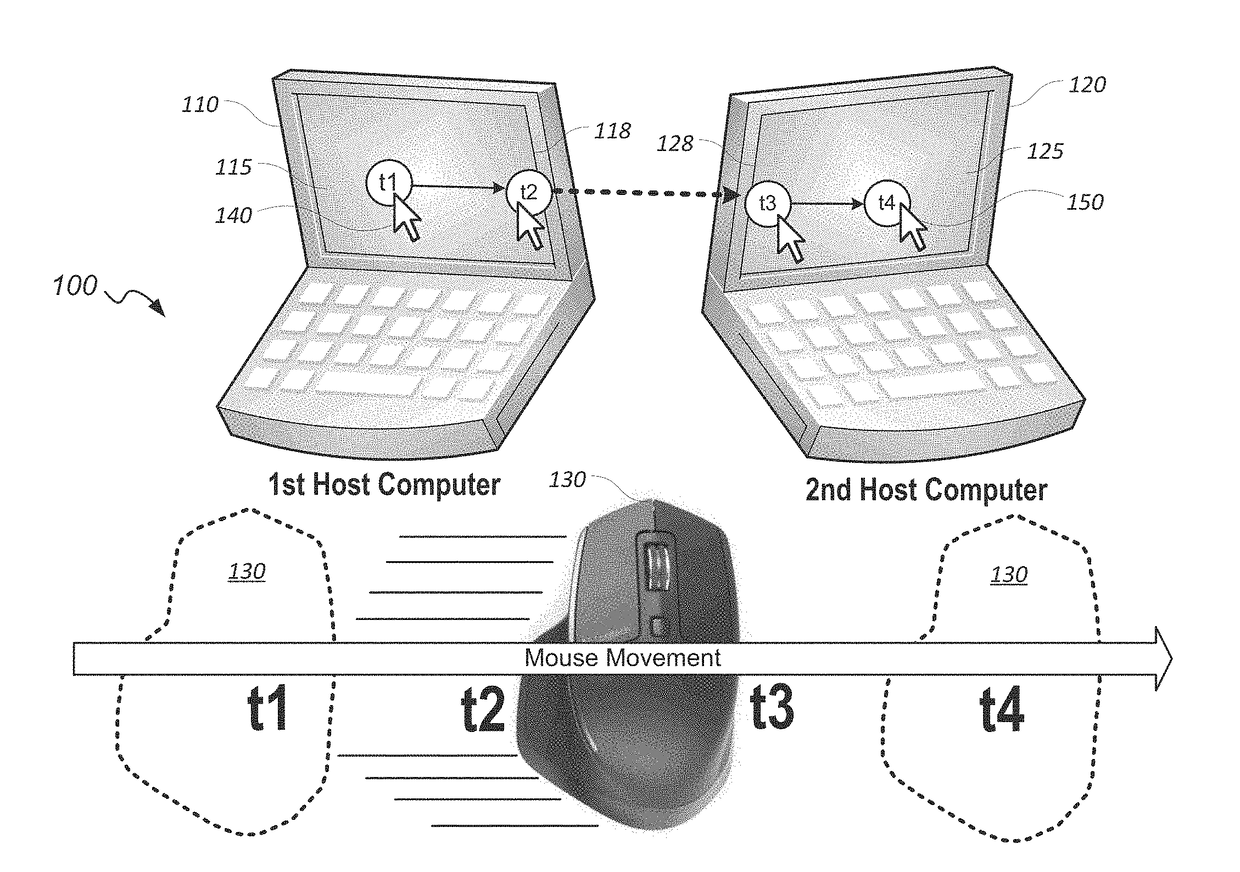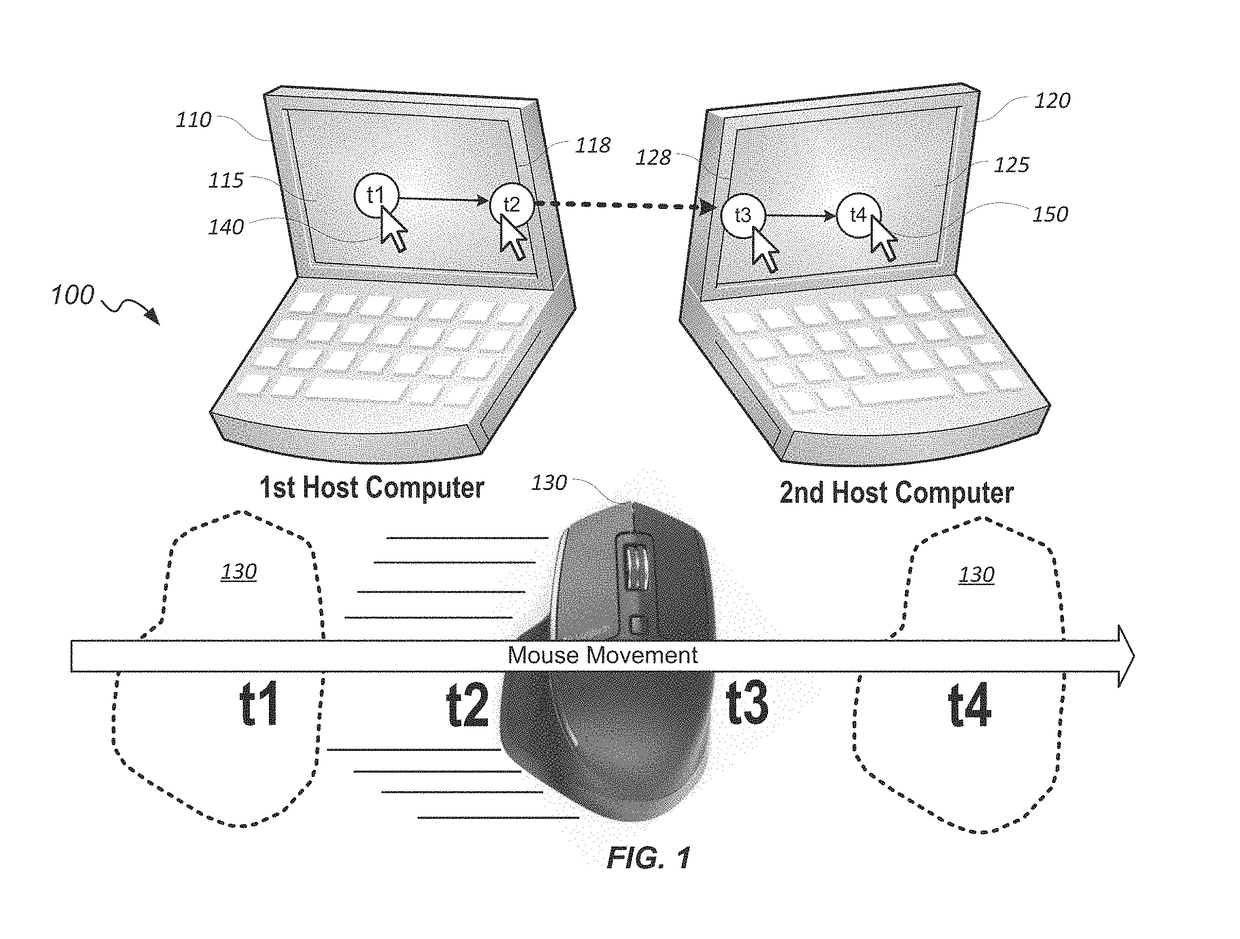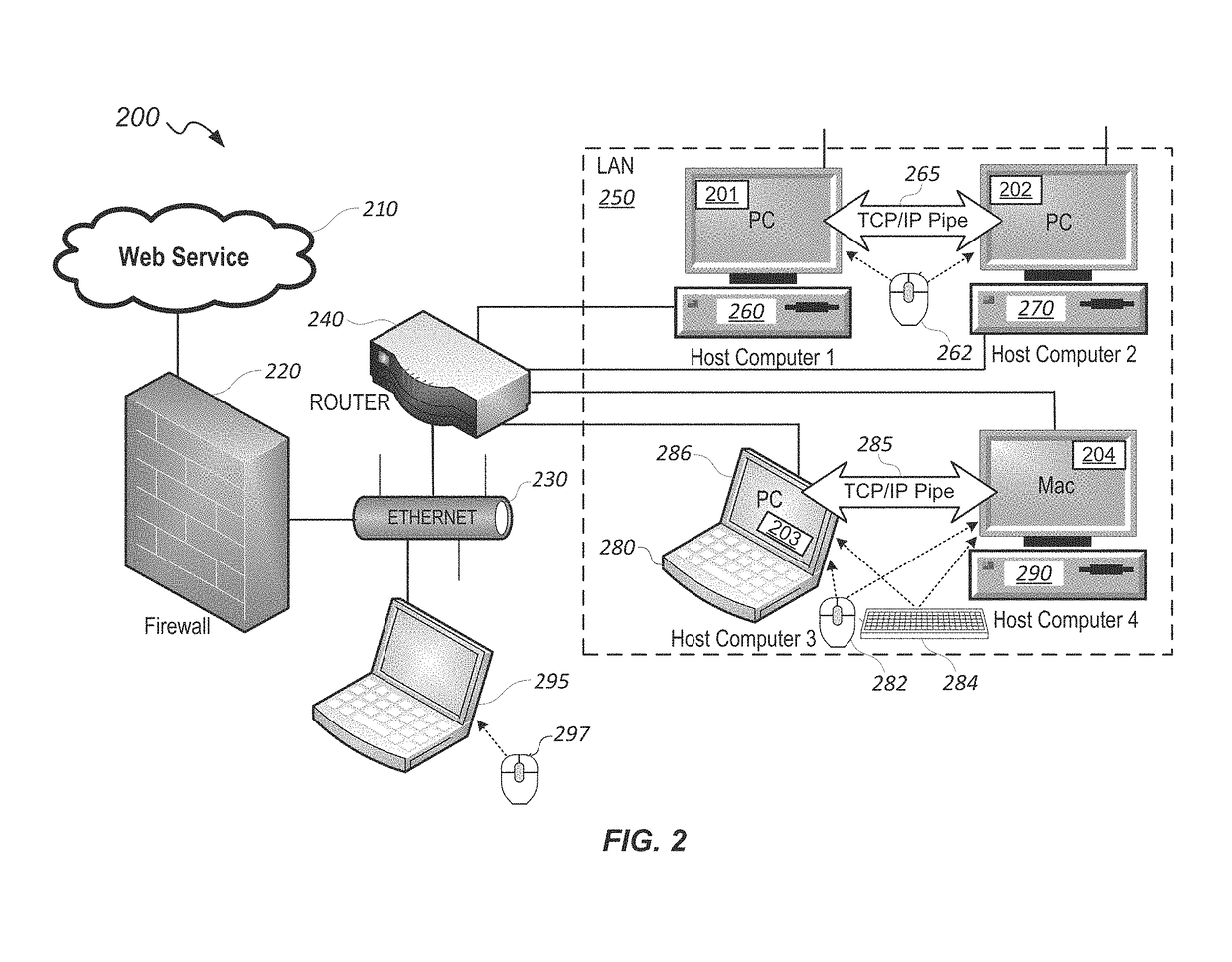Automatic multi-host switching for an input device
a multi-host switching and input device technology, applied in the field of automatic multi-host switching for input devices, can solve the problems of unfavorable user experience and unfavorable solutions
- Summary
- Abstract
- Description
- Claims
- Application Information
AI Technical Summary
Benefits of technology
Problems solved by technology
Method used
Image
Examples
Embodiment Construction
[0045]The present disclosure relates in general to computing devices, and in particular to systems and methods for automatically switching a multi-host switching device between host computing devices.
[0046]In the following description, various embodiments of automatic switching between computing devices will be described, among other inventive concepts. For purposes of explanation, specific configurations and details are set forth in order to provide a thorough understanding of the embodiments. However, it will also be apparent to one skilled in the art that the embodiments may be practiced without the specific details. Furthermore, well-known features may be omitted or simplified in order not to obscure the embodiments being described.
[0047]In certain embodiments, a user can cause an input device to automatically switch pairing from a first host computer to a second host computer by moving a cursor on a display of the first host computer to and / or beyond an edge of the display. Thi...
PUM
 Login to View More
Login to View More Abstract
Description
Claims
Application Information
 Login to View More
Login to View More - R&D
- Intellectual Property
- Life Sciences
- Materials
- Tech Scout
- Unparalleled Data Quality
- Higher Quality Content
- 60% Fewer Hallucinations
Browse by: Latest US Patents, China's latest patents, Technical Efficacy Thesaurus, Application Domain, Technology Topic, Popular Technical Reports.
© 2025 PatSnap. All rights reserved.Legal|Privacy policy|Modern Slavery Act Transparency Statement|Sitemap|About US| Contact US: help@patsnap.com



